| TimeTec has merged all of its solutions into www.timeteccloud.com, click to |
| IMPROVE STUDENTS PARTICIPATIONS IN HIGHER LEARNING INSTITUTES |
| Through Online Time Attendance System |
| Download PDF | Download PPT | |
 Braxton (2000) wrote that the greater the level of student's academic integration is, the greater the level of subsequent commitment to the goal of college graduation will be. He continues further by saying that attendance is very crucial in order for a student to advance in his education.
Braxton (2000) wrote that the greater the level of student's academic integration is, the greater the level of subsequent commitment to the goal of college graduation will be. He continues further by saying that attendance is very crucial in order for a student to advance in his education.Absenteeism in the higher education industry is not a new issue, it's been practiced by students for years yet the lax attitude of authority in handling absenteeism could lead to disastrous impacts on the students themselves, their families and the image of the school in general. Considering the amount of monetary investment to school one higher education student, parents have high expectations for their children's success and by having attendance in check, the probability of passing a course increases.

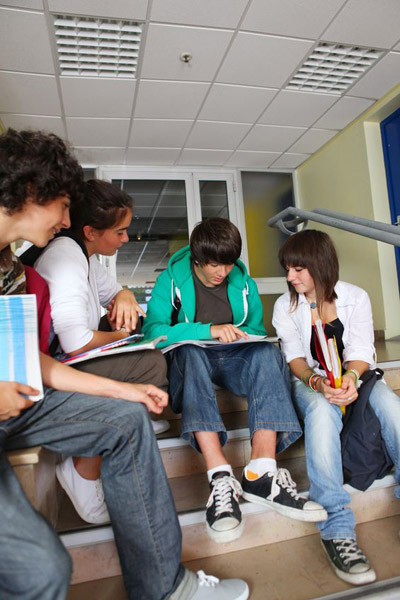
In her study on student attendance, Dr. Muir (2009) found that low attendance was commonly linked with poor student motivation (e.g. Race, 2007) and retention issues (Bowen et. al., 2005). Dr. Muir also questioned about whether students are making better use of their time by not attending classes and studying on their own instead. For most students of today, they are a lot more focused on assessment requirements, being keen users of technology such as online learning materials (WebCT, online notes, PowerPoint presentations, lecture materials etc.) which they use strategically. (Muir, J., 2009, Student Attendance: Is It Important, and What Do Students Think) Dr. Massingham questioned the availability of vast study materials online for students to use. "If students can access the lecture slides and the audio online, why should they come to lectures? If they can access necessary readings online, why even bother coming to the University campus at all particularly when they have other lifestyle commitments."
What about students who are known for having good attendance records? Do they perform better than others? According to Romer (1993), he believes that "students who are more interested in the material, or more skilled academically, or more focused...are almost certain to attend class more often than students who are less interested, less skilled, or less focused." He continued further with the thought that perhaps students are a lot more motivated to perform very well in their studies "rather than a true effect of attendance". Some faculties have taken stern actions in order to improve student attendances for their classes. For instance, Marburger (2006) discovered that attendance was higher in classes where chronic absentees were penalized. Naturally, the higher the attendance, the better results students would achieve in their exams.

According to the Biometric Consortium, biometrics is the science of "recognizing a person based on a physiological or behavioral characteristic." With buddy punching and frauds becoming prevalent in higher learning institutes as mentioned by Dr. Muir, biometrics is an effective method in order to record and monitor time attendance, which will prove to be very useful for the faculty to monitor students and ensure that not only will the rate of attendance rise up, but also productivity and positive results in a students' overall assessment as well. Several features are measured, including face, fingerprints, hand geometry, iris, retinal, vein and voice. While FingerTec have produced devices that help to monitor time attendance through the use of passwords, and RFID cards, the main draw would be its products that helps to verify users and time attendances with a touch of a finger or presenting a face.
Fingerprint recognition is the most effective way of biometrics verification and the reason for that is due to the uniqueness of a fingerprint and the accurate reading of the fingerprint's minutia points. Such accurate readings will ensure that forgery and buddy punching are eliminated in order to monitor attendance and discover who are the ones that are constantly absent from class so that further action can be taken to rectify the matter. Fingerprint method is also convenient, non-intrusive and relatively economical when it comes to biometrics solution available in the market. When students know that there is no option of using a friend to sign in for classes, the possibility of the real student to show up in classes could be improved. The percentage of attendance can be factored into the final grade as well to curb absenteeism. Biometric verification is also useful when it comes to monitoring attendances for examinations to eliminate all kinds of frauds committed by "naughty and creative" college kids. With a small investment on biometrics system, universities can improve students' attendance in classes and console parents on the fact that their investment in higher learning institute for their children is a positive investment.

One important feature of TimeTec TA that is integral for higher-learning institute setup is that it supports multiple clocking schedules. This is advantageous for lecturers and tutors who are juggling multiple classes every week. Students can be assigned to flexi-schedule clocking based on their respective classes. On Monday, a class starts at 9:00 and finishes at 10:00, another one starts at 3pm and finishes at 5pm. Schedules could differ in time everyday and TimeTec TA could cater to the environment. Therefore, each student who is attending the class would be required to report for attendance based on the scheduling that's been set by their lecturers or tutors. Compilation of the data will show the actual students attendance and it could be used to reflect on their grades or to advise them accordingly.
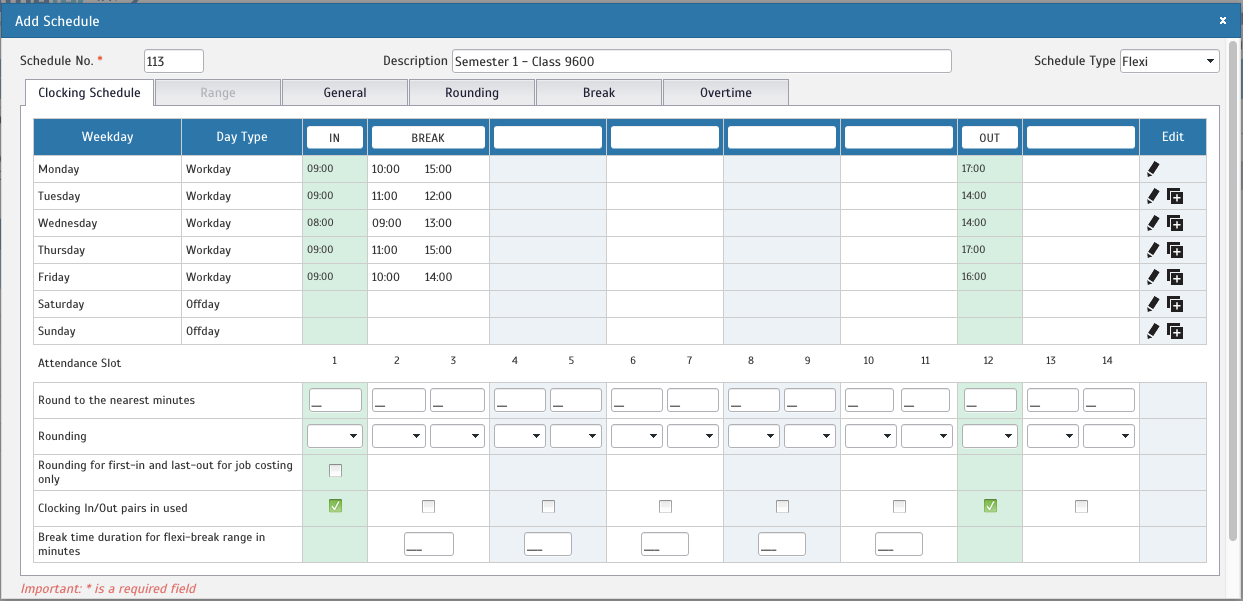 Schedule can be set according to the classes. Example, class starts at 9 am and finishes at 10 am, another class starts at 3 pm and finishes at 5 pm.
Schedule can be set according to the classes. Example, class starts at 9 am and finishes at 10 am, another class starts at 3 pm and finishes at 5 pm.
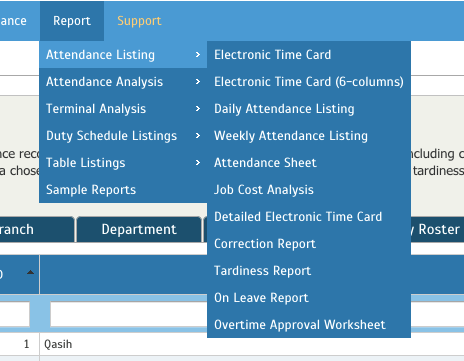
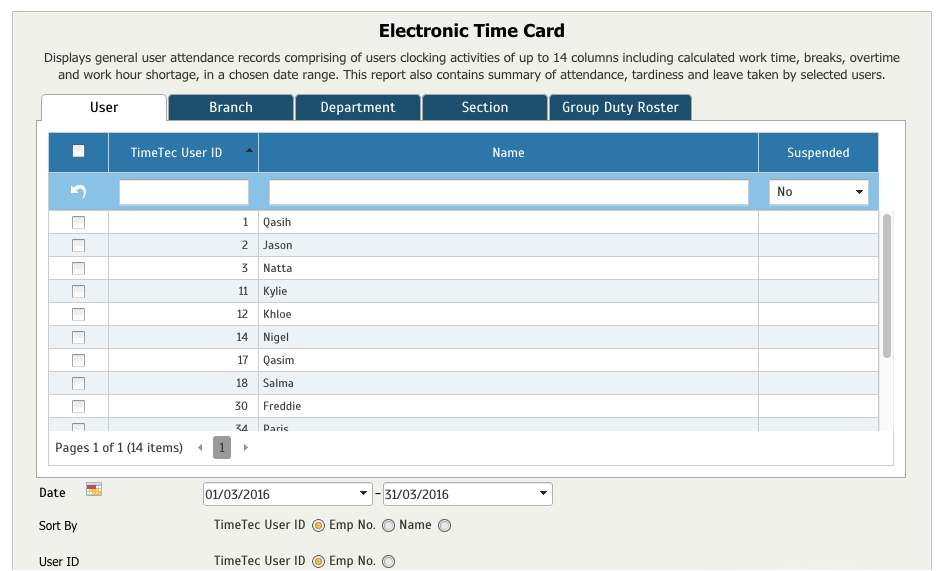
In conclusion, managing students attendance actually requires quite a high level of sophistication in terms of the data and processes involved. A powerful and capable system is necessary to achieve this. When it comes to a solution that is effective in managing time attendance for students in the higher education industry, look no further than TimeTec TA online, which is compatible with FingerTec time and attendance terminals, for an economically-friendly and highly effective solution to curb issues of time attendance in the higher education industry.
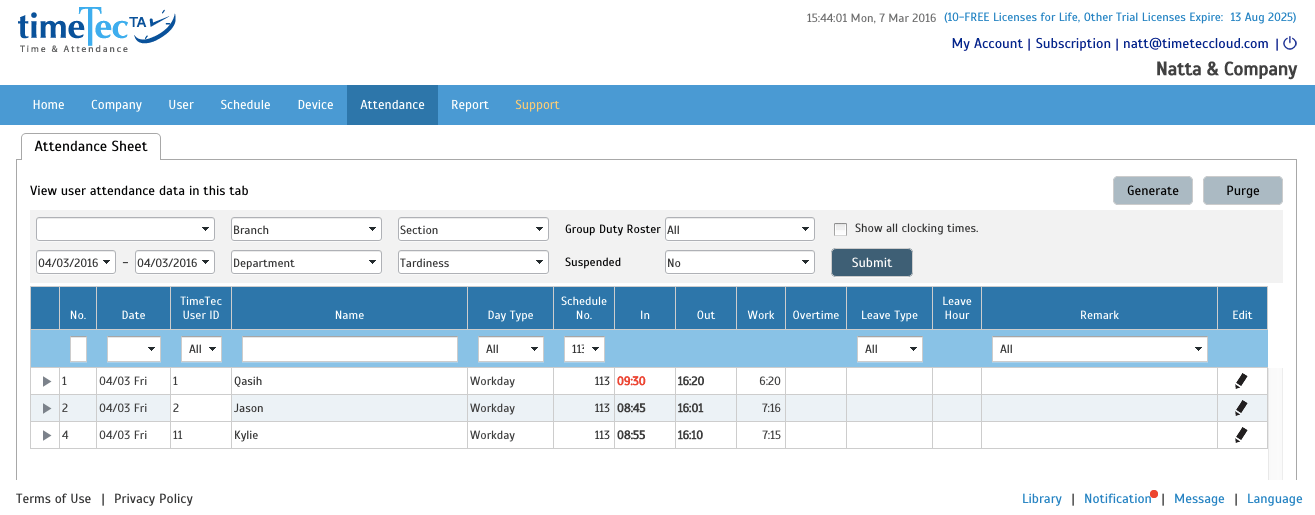 The administrator can view all students’ attendance, providing a clearer view of the campus situation and students behavior.
The administrator can view all students’ attendance, providing a clearer view of the campus situation and students behavior.
| References |
| Bowen, E., Price, T., Lloyd, S. & Thomas, S., 2005, "Improving the quantity and quality of attendance data to enhance student retention.", Journal of Further and Higher Education, 29 (4), pp 375-385. |
| Braxton, J. M., Reworking the Student Departure Puzzle (Vanderbit University Press, 2000), 3. |
| Gomis-Porqueras, P., MeiNecke, J. and Rodrigues-Neto, J.A., 2011, "New Technologies in Higher Education: Lower Attendance and Worse Learning Outcomes?", Agenda: A Journal of Policy Analysis and Reform, ed. William Coleman. |
| Hanaway, T., 2011, "Skipping classes causes a domino effect on grades, other students, bank accounts", The Advance-Titan- University of Wisconsin-Oshkosh, accessed 17th July, 2013, http://www.advancetitan.com/editorial/skipping-classes-causes-a-domino-effect-on-grades-other-students-bank-accounts-1.2001620#.UezRzouwpdg. |
| "Introduction to Biometrics", The Biometric Consortium, accessed June 30th, 2013, http://www.biometrics.org/introduction.php. |
| Levine, A. and Cureton, J. S., 1998, "Collegiate Life: An Obituary", Change: The Magazine of Higher Learning, Published online: 25th March, 2010, accessed June 20th, 2013, http://dx.doi.org/10.1080/00091389809602614. |
| Massingham, P. and Herrington, T., "Does Attendance Matter? An Examination of Student Attitudes, Participation, Performance and Attendance", Journal of University Teaching & Learning Practice, 3(2), 2006. |
| Muir, J., 2009, "Student Attendance: Is It Important, and What Do Students Think", CEBE Transactions, Vol. 6, Issue 2, September 2009, pp 50-69 (20). |
| Romer, D., 1993, "Do Students Go to Class? Should They?" The Journal of Economic Perspectives, Vol. 7, Number 3, Summer 1999, pp 167-174. |